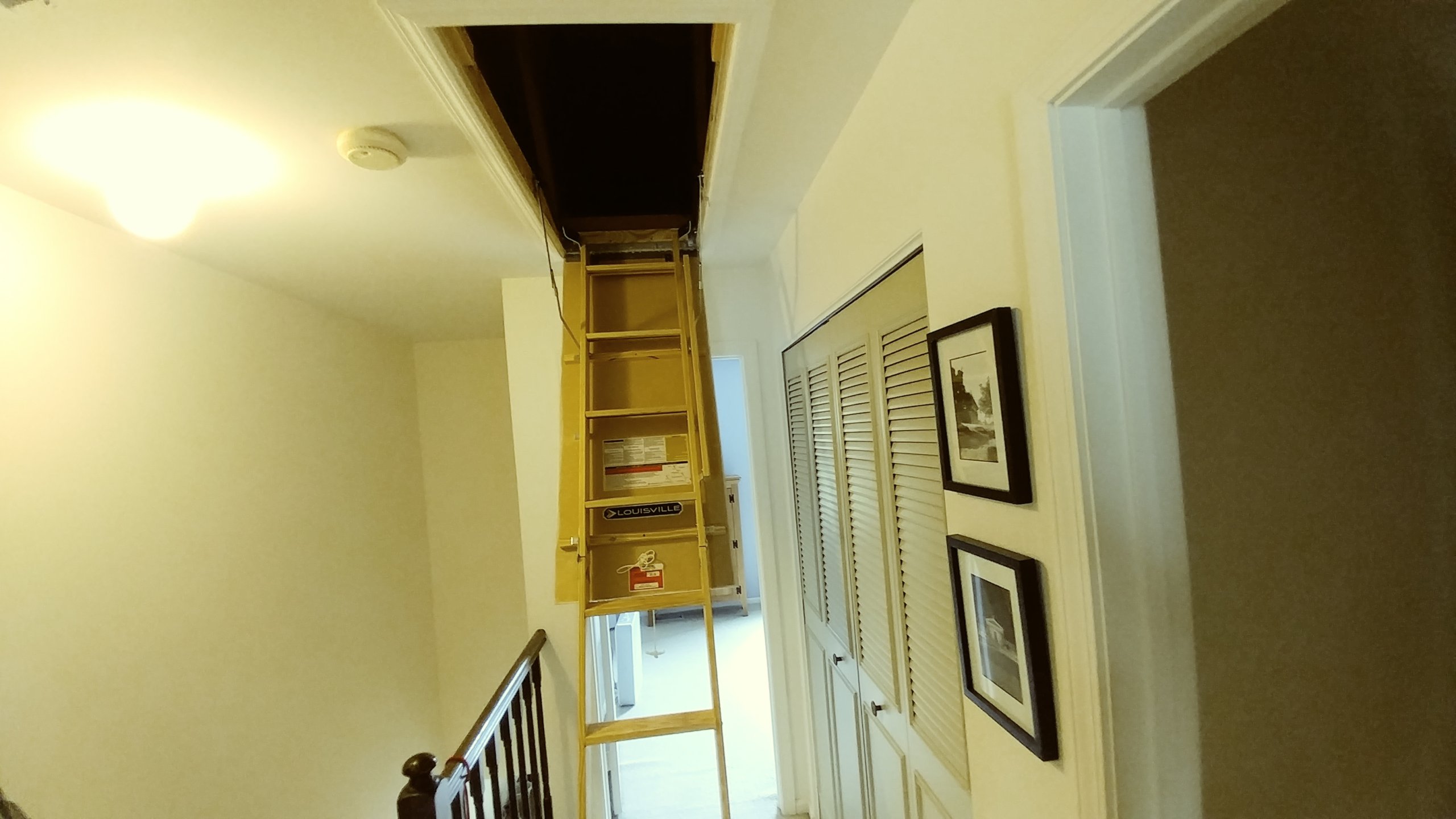What is an attic ladder and what you need to know?
 An attic ladder is a retractable ladder that is installed into an attic door/access panel. They are used as an inexpensive and compact alternative to having stairs that ascend to the attic of a home. They are useful in areas with space constraints that would hinder the installation of a standard staircase. Attic ladders are usually made of wood, metal, aluminum, or fiberglass.
An attic ladder is a retractable ladder that is installed into an attic door/access panel. They are used as an inexpensive and compact alternative to having stairs that ascend to the attic of a home. They are useful in areas with space constraints that would hinder the installation of a standard staircase. Attic ladders are usually made of wood, metal, aluminum, or fiberglass.
SOME CONSIDERATIONS FOR CHOOSING ATTIC LADDER BELOW:
Available Types
Attic ladders fold, telescope, scissor or slide up into the attic space. Some have electric motors. Attic ladders are often made of wood, but some are made of aluminum or steel.
Consider whether you’d prefer to hold on to a handrail as you carry items up and down the attic ladder, or use the upper rung for support. The National Safety Council (NSC) advises three points of contact with any ladder at all times.
Attic ladders have either traditional rungs or shallow steps. The angle of an extended attic ladder may differ as well, but it is usually steeper than a regular staircase.
Prices range from less than $150 to more than $1,500, depending on load limit, material, quality of construction, length and the size of the opening.
How to Choose an Attic Ladder
Choosing the right attic ladder all comes down to your preference. There are many options available and you need to find something that you yourself feel comfortable using, or have people in your family use. It needs to fit your needs and your budget, so to start deciphering which one might be a good choice, ask yourself some questions.
How Often Will You Use Your Attic Ladder?
Figure out just how much you will use your attic ladder. Will you be going up and down the attic ladder frequently? Or will it be once or twice a year? If it’s only going to get infrequent use, do you want to get a ladder that’s lower in cost but still permits you to access the attic?
Who Will Be Using It Most?
Think about who will be trekking up those stairs in the family. Putting up boxes and other items to store in the attic, most likely an adult will be handling the job, with another person handing the stuff to them from below. A teenager or young adult might be assigned the chore, too. If someone who will be navigating this ladder has medical issues, such as bad knees or hips, you might prefer to select a ladder that is angled more or has handrails, making it easier to climb.
Length and Weight
Attic ladders are sold in different lengths. Be sure to measure the distance from your ceiling to the floor and buy an appropriate size. The weight rating relates to the load capacity of the ladder itself. As a general rule, the more weight a ladder can hold, the sturdier it is. At the very least, buy a ladder that can handle the weight of the heaviest person who will be using it, plus the heaviest load they will be hauling up and down. This may mean that a 250-pound capacity is sufficient, although 300 pounds may be a better choice, even if it requires some extra framing.
Material
You can find attic ladders made of aluminum, steel, or wood. Aluminum is generally the best all-around choice because it is lightweight and strong. Because aluminum is a rust-resistant metal, it’s unlikely to be affected by humidity and temperature over the years. A wood ladder also might very well last as long as the house, but it may be more prone to the effects of moisture and temperature change, as well as potential natural defects.
Safety Features
Some attic ladders offer additional safety features. Slip-resistant steps, handrails, latches, and locks are nice to have options. There are some ladders that have locking mechanisms on the hinges to ensure the ladder stays in place. If there are children in the home, a lock that secures the opening hatch is also an important safety feature to consider.
